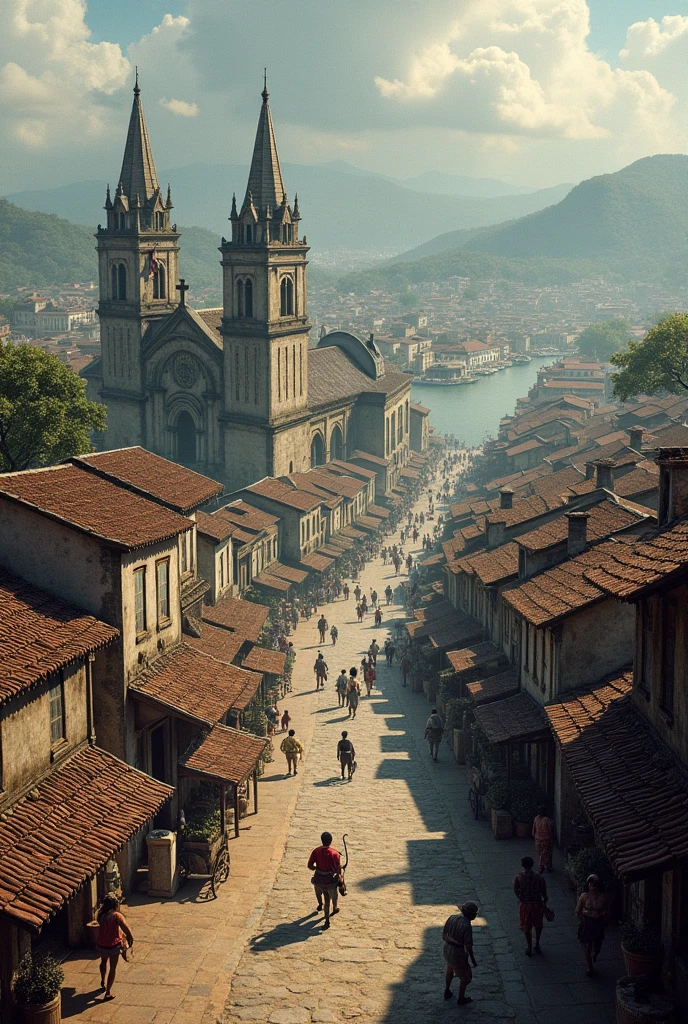"Visualize Metro Manila in 1861, a bustling yet evolving colonial capital under

Generation Data
Records
Prompts
Copy
"Visualize Metro Manila in 1861
,
a bustling yet evolving colonial capital under Spanish rule
.
The cityscape is a mix of Spanish colonial architecture and local Filipino influences
.
Intramuros
,
the walled city at the heart of Manila
,
stands prominently with its fortified walls
,
narrow cobblestone streets
,
and grand stone buildings
,
including churches
,
government offices
,
and residences of Spanish officials
.
The San Agustin Church
,
with its baroque architecture
,
is a notable landmark within the walls
.
Outside Intramuros
,
along the Pasig River
,
are the busy districts of Binondo
,
Tondo
,
and Sta
.
Cruz
,
where commerce thrives
.
Binondo
,
known as the world's oldest Chinatown
,
is filled with Chinese merchants
,
trading goods in bustling markets
.
The streets are lively
,
with horse-drawn carriages (kalesas) moving along unpaved roads
,
and people from various walks of life—mestizos
,
Spanish elites
,
Chinese traders
,
and native Filipinos—conducting their daily business
.
Houses in the surrounding areas
,
known as bahay na bato
,
are built with stone on the ground floor and wood on the upper levels
,
with wide windows adorned with capiz shells
.
The riverbanks are lined with small boats (bancas) and larger vessels
,
contributing to the active trade along the Pasig River
.
Surrounding the urban areas are agricultural lands
,
rice fields
,
and small farming communities
,
with the greenery gradually giving way to the jungles and mountains beyond the city's outskirts
.
The overall atmosphere of Manila in 1861 is one of cultural blending and economic activity
,
set against a backdrop of colonial rule
,
with the lingering presence of Spanish power evident in the architecture
,
governance
,
and social hierarchy
.
"
INFO
Checkpoint & LoRA

Checkpoint
SeaArt Infinity
#Photography
#Scene Design
#SeaArt Infinity
0 comment
0
0
0









